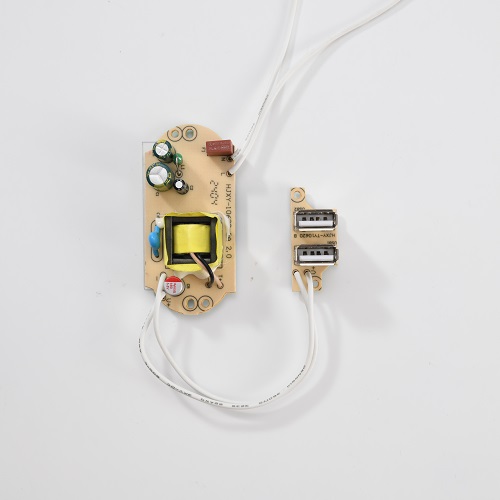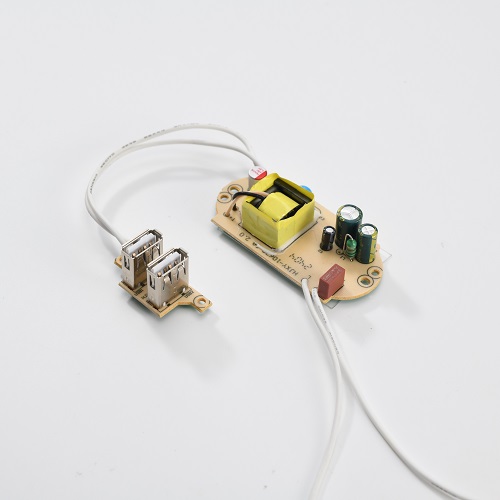

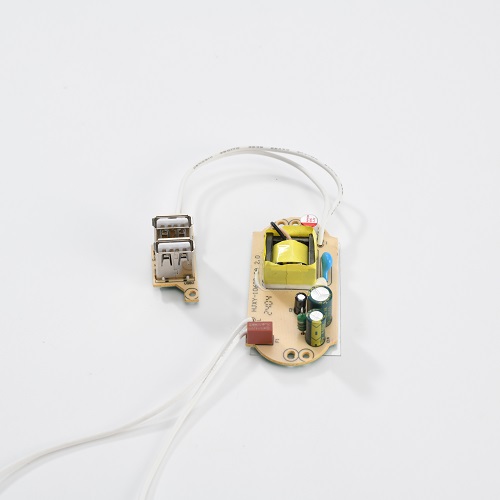
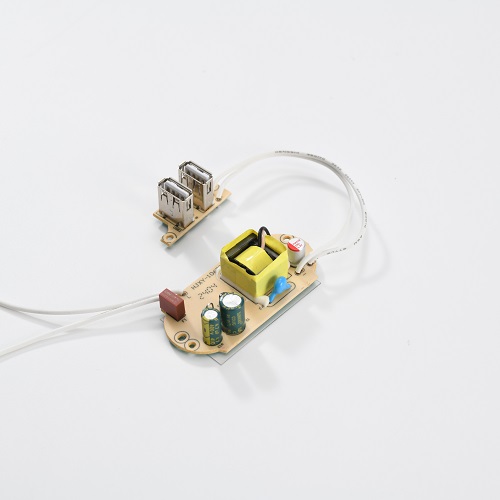
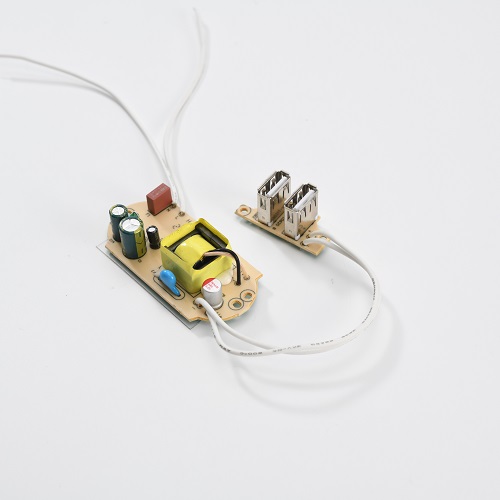
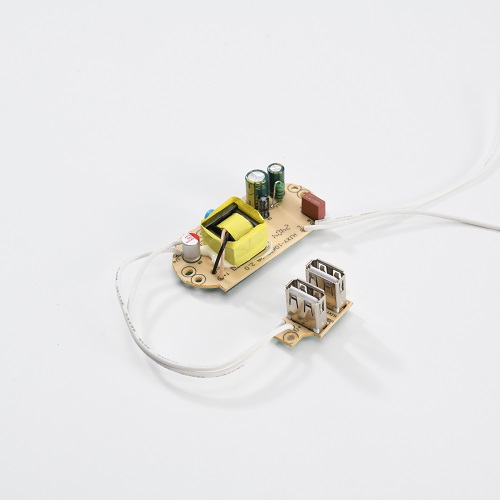
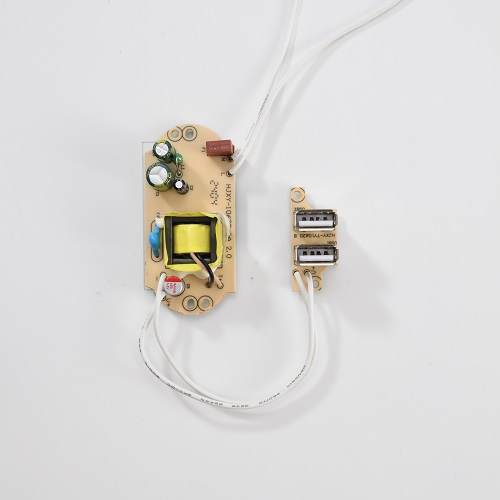
Dual USB Port Power Converter Board is an electronic circuit module that converts alternating current (AC) or direct current (DC) into a standard USB output voltage. It has two USB output interfaces and can power or charge two devices at the same time. It is widely used in smart devices, embedded systems, vehicle systems and other occasions, and is an important part of modern multi-device power supply solutions.
Such conversion boards usually have built-in voltage regulation, voltage stabilization protection, overcurrent protection and other circuits to ensure stable and safe output voltage and meet the power supply standards of USB devices.
Parameter:
Input voltage: | AC100~240V |
| Input frequency: | 50/60Hz |
| Output voltage and current: | 5V2.1A 2USB |
| Output power: | 10.5W |
| Working efficiency: | ≥79% |
| Working temperature: | -20℃~+50℃ |
| Storage temperature: | -20℃~+80℃ |
| Humidity: | 10%~90% RH |
| Multiple protection functions: | overvoltage protection, short circuit protection, overload protection, temperature protection |
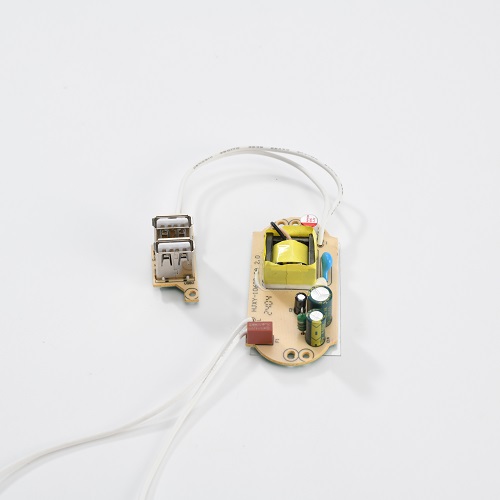
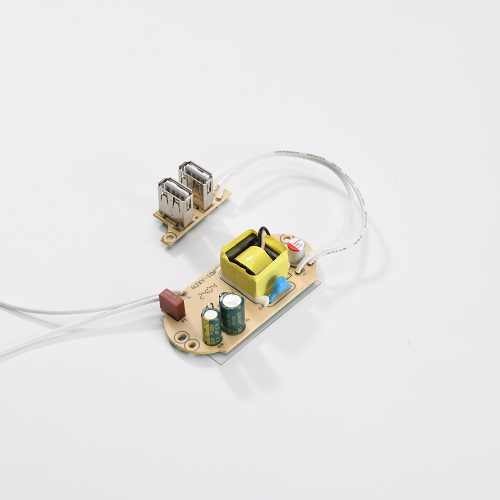
Main materials:
PCB board: usually uses FR-4 epoxy glass fiber material, which has good insulation, heat resistance and mechanical strength.
Power conversion chip: such as buck chip, linear regulator, used for voltage conversion.
Rectifier/filter: rectifier bridge, electrolytic capacitor, etc., to ensure stable power output.
USB socket: usually a standard A-type USB interface, using copper nickel-plated or gold-plated material to ensure conductivity and corrosion resistance.
Inductors, resistors, MOSFETs, TVS diodes and other devices are used for protection and voltage stabilization.
Heat dissipation material: Aluminum heat sinks or thermally conductive silicon pads may be provided on high-power boards to prevent overheating.
Applications:
Charging of mobile phones and tablets: Often used as a module in sockets, power strips, and portable power supplies to power mobile devices.
Power supply for embedded systems: Used to power development boards such as Raspberry Pi, Arduino, and ESP32.
Automotive electronics: Convert automotive power (such as 12V) to 5V USB to support power supply for navigators and recorders.
Smart home systems: Provide stable power for small smart devices such as sensors and controllers.
DIY electronic product development: Suitable for use in scenarios such as electronics enthusiasts, education and training.
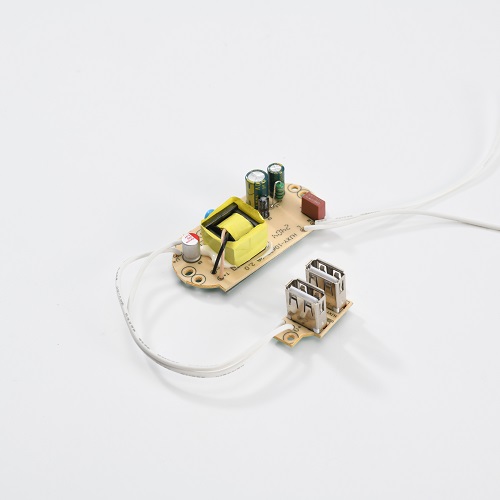
Features:
Dual USB interfaces: Can power or charge two devices at the same time to improve efficiency.
Stable output: The output voltage is generally 5V, and the current supports 1A~3A, which meets the needs of most USB devices.
Overvoltage and overcurrent protection: Integrated circuit protection function to ensure the safety of circuit boards and powered devices.
Small size: Compact design, easy to integrate into various electronic devices.
Flexible voltage input: supports AC 110V240V or DC 6V36V input, strong compatibility.
Low standby power consumption: suitable for long-term power-on operation, energy-saving and environmentally friendly.
Modular design: convenient for embedding or combined application, adapting to different system and structural requirements.
Advantages:
Wide application: compatible with a variety of power input and USB output scenarios, strong adaptability.
Safe and stable: supports multiple protections such as short circuit, overcurrent, overvoltage, overheating, etc.
Dual device power supply: compared with a single USB board, it is more suitable for modern multi-device simultaneous use scenarios.
High cost performance: cost controllable, suitable for batch use and integrated development.
Easy to install and integrate: standard interface, universal size, easy to embed in various product shells or baseboards.
FAQ:
Is the output voltage of Dual USB Power Converter Board fixed?
Generally, it is a fixed 5V output, which meets the USB device power supply standard, but some models also support adjustable voltage function (such as 3.3V/5V/9V).
Can it power two high-current devices at the same time?
It depends on the total output power of the board and the current limit value of each USB port. For example, if the total output is 5V 3A, each port may support 5V 1.5A. Exceeding the current may trigger the protection mechanism or cause instability.
Can it be used directly by connecting to the mains?
If it is an AC~DC type, it must have AC input capability (110V~240V), otherwise it must be connected to a voltage regulator adapter first. Some models only support DC input (such as 12V).
Can it be used for fast charging devices?
Ordinary modules only support standard 5V charging. If fast charging is required, a dedicated chip board with QC and PD protocol identification must be used.
How to judge the quality of the power board?
It can be judged by whether the output voltage is stable, whether there is ripple, current carrying capacity, heat dissipation performance, and whether it has protection functions. High-quality boards are also certified by CE, FCC, etc.
